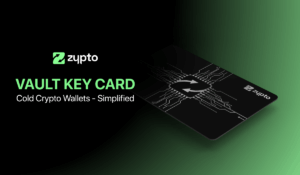The crypto market is a vast ecosystem boasting an impressive $2.4 trillion in capitalization. As an enthusiast or investor, your portfolio likely contains many digital assets like Bitcoin, Ethereum, and other altcoins of choice. Amidst these offerings, stablecoins shine brightly as the crucial bridge between cryptos and the traditional finance system.
These digital assets offer stability and a gateway to exciting DeFi opportunities. Notably, centralized institutions are now integrating them into their finance systems. This article explains stablecoins, their perks, types, popular examples, and their associated regulatory challenges. Without further ado, let’s dive right into this discussion.
What are Stablecoins?
Stablecoins are digital assets designed to maintain a fixed value. They are often pegged to fiat currencies, commodities, or other financial instruments. These digital assets offer a “stable” solution to the dynamic volatility that characterizes traditional crypto assets.
A quick look at the stablecoins chart shows that they are typically in the $1 range. Also, you may note little to no fluctuations in their prices over multiple timeframes. This is so because stablecoins are backed with a reserve of assets, either fiat or cryptos. Thus, they are reliable options for daily transactions and long-term savings.

Three Major Categories of Stablecoins
There are three major categories of stablecoins, each with unique features and use cases. They are either fiat-based, crypto-based, or algorithmic. Let’s explore their differences.
Fiat-collateralized
These are backed by a reserve of some fiat currencies, like the US dollar or Euro, held in a bank account or a trusted custodian. This reserve currency is equal to the issued stablecoin. Typical examples are Tether (USDT) and USD Coin (USDC). Their stability depends on the custodian’s reliability and reserves’ transparency.
Crypto-collateralized
Unlike their fiat-based counterparts, these stablecoins are backed by top cryptos in the market. A popular example is Dai (DAI), backed by Ethereum (ETH). Fully decentralized, these stablecoins rely on smart contracts to manage the actual collateralization ratio for such tokens and maintain stability.
Algorithmic
These stablecoins don’t rely on digital or physical assets as collateral. Instead, they use sophisticated algorithms and monetary policy to regulate their supply against the market’s demand for them. Terra (LUNA) and Ampleforth (AMPL) are excellent examples.
Why Stablecoin Adoption is Soaring in Traditional Finance
There is no denying that the crypto market is incredibly volatile. The last bearish cycle saw top assets like Bitcoin and Ethereum lose over 75% and 80% in price, respectively. This makes them unstable and challenging to function as reliable stores of value over time.
Thankfully, stablecoins are changing the game, especially in traditional finance. Here are compelling reasons why their adoption is on a steady climb:
Stability
As the name suggests, stablecoins are like anchors in the volatile crypto sea. As they peg their value to assets like the US dollar, they become reliable mediums of exchange. This type of stability is much needed for a corporation or an individual looking to do digital transactions without worrying about volatile price action.
Ease of Access
Every trade in the crypto exchange involves stablecoins, which are always on hand and available. With an internet-enabled device, users can access these assets on the go. This accessibility beckons newbie traders who want a safe entry spot in the crypto market.
Security
Since stablecoins are pegged against either fiat or crypto, they offer some levels of security that are not found in other assets.
Lower Transaction Fees
Stablecoins align with the goal of decentralization, as they offer lower transaction fees. Users can engage in peer-to-peer transactions without a central authority, thereby cutting costs and increasing efficiency.
Cross-Border Transactions
Stablecoins bypass the geographical barrier and conventional currency restrictions and fees, making international transfers faster, cheaper, and more secure.

Diverse Use Cases
Global Payments
Given its increasing adoption, stablecoins cut across different sectors globally. Let’s explore some popular use cases today:
Digital Markets
Stablecoins facilitate easy crypto trading by bridging digital assets and fiat. They also make onboarding and offloading assets on public blockchains efficient, thus making the global markets more liquid and accessible.
They offer instant and secure peer-to-peer transactions globally and are available 24/7. They are also accepted as a form of business payment and cross-border remittances.
Decentralized Finance
Stablecoins are fundamental to the DeFi ecosystem, where they serve multiple purposes:
- They allow easy trading and provide liquidity for diverse tokens, especially in Automated Market Makers (AMM).
- They act as collateral for borrowing and lending activities in decentralized finance. Users can access loans without intermediaries.
- Stablecoins are used in derivative contracts, hedging strategies, and synthetic assets within DeFi protocols.
- They are the reserve assets of Decentralized Autonomous Organizations for governance and staking.
How to Integrate Stablecoins with TradFi Systems
The financial sector is embracing digital innovation, revolutionizing monetary transactions with stablecoins. These stable assets enhance transaction efficiency, cost-effectiveness, and speed for centralized entities in the blockchain. Here’s how to integrate them:
Choose a Stablecoin
Select a stablecoin, such as USDT (Tether) or USDC (USD Coin).
Transfer to Financial Account
Move them from your crypto wallet to your TradFi account.
Convert to Fiat
Convert them into your preferred fiat at minimal service charges.
Use Funds
Utilize converted funds for bill payments, shopping, or savings.
The benefits of integrating stablecoins include stable value maintenance and swift transaction processing. It also improves financial inclusivity, particularly in underserved regions of the world.

Comparing Stablecoins with Foreign Exchange (Forex)
Stablecoins and forex offer distant approaches to facilitating cross-border transactions. As noted earlier, stablecoins are anchored to fiat currencies and have emerged as stable assets in various crypto transactions.
On the other hand, forex is a market that operates through exchanging one currency against another in a central market where rates vary based on geopolitical, economic, and other factors.
How do these two compare or contrast? Let’s find out in the table below:
| Aspects | Stablecoins | Foreign Exchange (Forex) |
| Stability | They maintain a stable and predictive value in transactions | They are subject to fluctuating rates between currency pairs, influenced by geopolitical events or economic factors |
| Transaction Speeds | They are typically faster, offering instant settlement times and lower fees | They involve longer settlement times due to intermediary banks and varying time zones |
| Accessibility | Stablecoins are accessible globally. They can be used for transactions and investments at any time | Forex trading requires access via financial institutions or brokers. Trading hours are also limited to specific market sessions and weekdays |
| Use Cases | They are used in international payments and DeFi protocols | Forex trading is used to hedge currency risks and facilitate international trade |
Three Popular Stablecoins
The stablecoin market has over 40 assets, with a daily trading volume of over $65 billion. Here are three popular types used in daily transactions.
Tether (USDT)
This is pegged to the US dollar, aiming to maintain a 1:1 ratio. It facilitates fast transactions with minimal fees, making it popular among traders for its arbitrage efficiency and price stability.
Despite controversies surrounding its reserve backing and management, Tether remains widely used in crypto. Its multi-blockchain presence on Ethereum, Binance Smart Chain, Tron, Solana, and more underscores its adaptability amidst dynamic market demands.
USDC (USD Coin)
It is another dollar-pegged asset. The Center Consortium created USDC, ensuring that a specified amount of US dollars backs each coin. Those reserves are audited and checked by independent auditors regularly.
USDC is also designed to operate on multiple blockchains. Hence, it’s easily accessible and very convenient to use. It supports most cross-border financial operations, such as payments, loans, and trading, within minutes.
Dai (DAI)
DAI is a decentralized asset created by MakerDAO in 2017. It was created to always maintain the 1:1 peg through collateralized crypto, most of which is Ethereum. Since DAI operates via smart contracts, it doesn’t have to worry about obtaining permissions from any central authority to control itself.
Users can create DAI tokens by locking their ETH into a Collateralized Debt Position (CDP). Hence, they can serve as a convenient, flexible financial instrument for loans, payments, and investments in DeFi.
Regulatory Concerns and Challenges
Despite the dedication to closing the gap between traditional and digital currencies and maintaining a stable value, many stablecoins face hurdles.
The first, of course, would be regulatory uncertainties. Various countries view stablecoins in different ways, some classifying them rightly as currencies, others as securities, and some even as commodities. This lack of clarity makes it hard for investors to assess their legality, thereby hindering broader adoption.
Secondly, the risk of centralization looms large. Some stablecoins are backed by a single entity, giving that entity full control. This centralization can lead to market manipulation. Tether, for example, faced accusations of insufficient reserves to back its tokens adequately.
Another critical challenge is maintaining peg value. If a stablecoin is pegged to the dollar, for example, fluctuations in that fiat may destabilize the asset’s value. That volatility invariably erodes the very reason for the existence of the stablecoin.
Currently, there is no harmonized global framework for stablecoins. In the United States, stablecoins are treated as securities under federal law. They fall under e-money regulations in Europe, requiring issuers to be licensed and comply with Anti-Money Laundering and Combating the Financing of Terrorism (AML/CFT) rules.
Some nations, like China, have banned these assets entirely in favor of state-owned digital currencies (CBDCs). Yet, there is a growing need for a unified front for this asset class. International organizations like the Financial Stability Board (FSB) and G20 are building frameworks that balance innovation with investor protection.
Ultimately, a transparent regulatory environment will be pivotal in shaping stablecoin’s future role in global finance.
Final Thoughts
Stablecoins are crucial in bridging TradFi and crypto, offering stability and versatility for investors. As the crypto market evolves, staying updated on regulatory changes is essential. These set of coins are set to play a pivotal role in promoting innovation and financial inclusion globally.
At Zypto, we recognize the potential of stablecoins in crypto payments. We integrate all necessary components to transform digital transactions into mainstream financial activities through our advanced Zypto Pay Crypto Payment Gateway for businesses.
The Zypto App combines secure wallets, intuitive interfaces, robust exchanges for over 24,000 digital assets including all stablecoins, crypto cards and crypto bill payments into one perfect ecosystem. Join Zypto to experience the future of crypto payments in one platform – simple, safe, and unified.
Think we missed out on anything regarding stablecoins? Share your thoughts via the comment box below.

FAQs
Is Bitcoin a stablecoin?
No, Bitcoin is not a stablecoin. Bitcoin is a cryptocurrency known for its price volatility, while stablecoins are designed to maintain a stable value, usually pegged to a fiat currency like the US dollar.
What is an example of stablecoins?
Stablecoins are digital assets designed to maintain a stable value by being pegged to a reserve asset, such as a fiat currency, commodity, or algorithmically controlled supply.
An example of a stablecoin is Tether (USDT), which is one of the most widely used stablecoins and is pegged to the US dollar, aiming to maintain a 1:1 value with it.
What is the safest stablecoin now?
As of now, USD Coin (USDC) is considered one of the safest stablecoins due to its transparent reserve audits and regulatory compliance. It is fully backed by fiat reserves held in regulated financial institutions.
How do stablecoins make money?
Stablecoins make money primarily through transaction fees, interest earned on the reserves backing the stablecoin, and sometimes through lending and investing those reserves.
Additionally, issuing companies may charge fees for minting and redeeming stablecoins.






























0 Comments